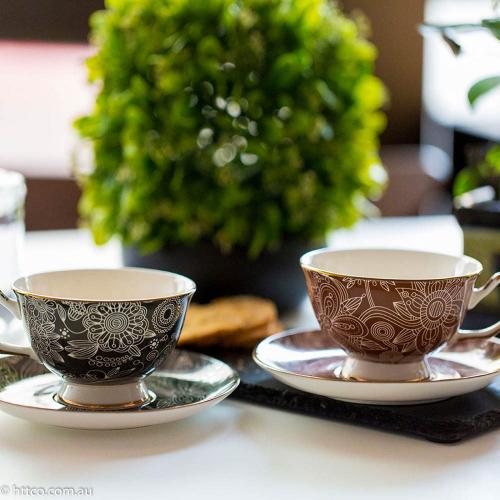History of Fine Bone China

Fine bone china, fine china, porcelain: What’s the difference? They can look very similar, but there’s a definite difference in what they are made from. Fine bone china is, as the name suggests, made from bone—cow bone in particular. The same manufacturing processes are used in making fine china, but without the bone content. Porcelain is created in much the same way, but it’s fired at a higher temperature.
Fine bone china undergoes two firing processes. The first causes the product to shrink, and about 20% of the pieces may crack. The second firing happens after the piece is glazed, and melts the glaze into the piece, strengthening the product. Those that don’t crack or break during this stage are then decorated with final patterns. Many pieces are hand painted or sprayed and in some cases decals can also be applied. Many of our products are hand finished and may produce minor imperfection in artwork.

At a glance, it’s easy to tell the difference between fine bone china and fine china if you know what you’re looking for. The addition of fine bone ash gives bone china a delicate light finish and if you hold the fine bone china up to the light you will see it has a translucent quality compared to fine china.
Fine bone china is the toughest of porcelains with bone ash making up the greatest part of the formula, resulting in a material that is hard, resilient and ivory white in colour.
It is written that fine bone china was originally developed in England in 1748* in order to compete with imported porcelain from China. The English read the letters of Jesuit missionary Francois Xavier d'Entrecolles, who described Chinese porcelain manufacturing secrets in detail. One writer speculated that a misunderstanding of the text could possibly have been responsible for the first attempts to use bone-ash as an ingredient of English porcelain although this is not supported by researchers and historians. In China, kaolin was sometimes described as forming the 'bones' of the paste, while the 'flesh' was provided by the refined rocks suitable for the porcelain body. Traditionally, English bone china was made from two parts of bone-ash, one part of kaolin and one part china stone, although this has largely been replaced by feldspars.
*The above information is sourced from Wikepedia.org China mingci.com and the China Ceramic Association.